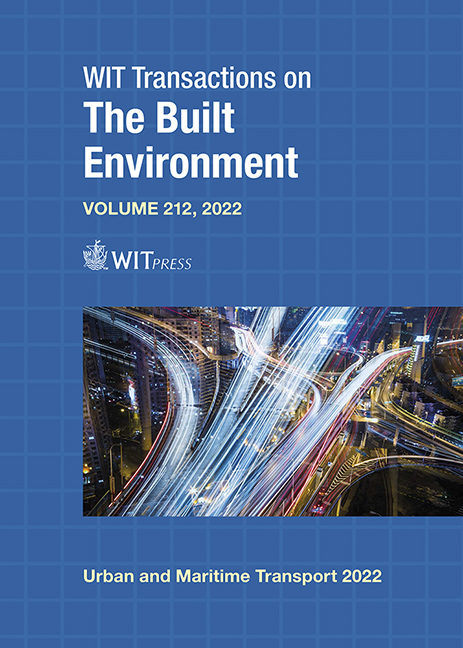LANDUSE PLANNING FOR ELECTRIC VEHICLE INFRASTRUCTURE
Price
Free (open access)
Transaction
Volume
212
Pages
11
Page Range
61 - 71
Published
2022
Paper DOI
10.2495/UMT220061
Copyright
Author(s)
GARGI GHOSH
Abstract
India is committed to the Paris Agreement by making efforts to reduce the emissions intensity of its GDP by 20–25% from its 2005 levels by 2020 and by 33–35% by 2030. As a part of this commitment, India intends to adopt 30% electric vehicles (EVs) in its vehicle population by 2030. In pursuant to the mission, the government has formulated the Electric Vehicle Policy, Model Building Guidelines and other related policies and guidelines. Various financial tools and incentives have also been declared. Large scale adoption of EVs would require provision of various infrastructures for the EV users. One of the major requirements is the availability of accessible charging infrastructure. Providing accessible charging infrastructure for EVs within the urban landscape would pose various locational, financial and technical challenges. Needless to say, there is a need for identifying spatial and landuse planning strategies to accommodate and sustainably plan for EV infrastructure. There has been a good initiative of work on locational models, plans, user perspective and business models for charging stations. However, works on landuse planning for charging infrastructure is still in its nascent stage. The aims of the paper are to (a) explore the necessity of deriving a landuse planning framework for EV charging infrastructure; and (b) to identify a replicable model for spatial planning for EV charging infrastructure for Indian cities. The paper reviews the various applicable guidelines for EV infrastructure and best practices, locational theories, zoning and building regulations and arrives at a framework for landuse planning for EV infrastructure. The case area for the study is Bangalore city.
Keywords
electric vehicles, charging infrastructure, India, Bangalore, landuse planning, AHP




